Categories
- Tree of Life Necklace62
- Chiming Tree of Life Necklace4
- Tree of Life Bracelet19
- Tree of Life Earrings15
- Tree of Life Rings6
- Silver Chains & Necklace Cords2
- Tree of Life Pendant52
- Wooden Tree Of Life Necklaces4
- Gemstone Pendants22
- Tree of Life Key Rings
- More JEWELRY6
- New Products ...
- Featured Products ...
- All Products ...
New Products [more]
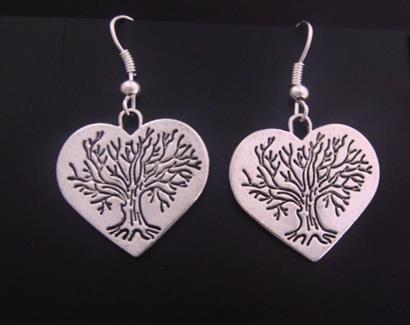
Tree of Life Earrings, Heart Shape Stamped with Impressive Tree
Sale: $6.27
Save: 30% off
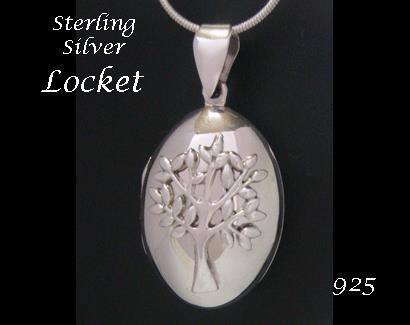
Tree of Life Locket, 925 Silver with 925 Tree of Life Pendant
Sale: $52.47
Save: 30% off
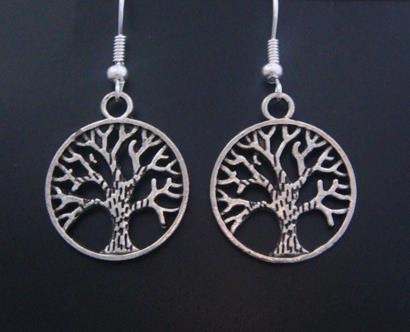
Tree of Life Earrings, Antique Style Tree, Tibetan Silver Alloy
Sale: $6.27
Save: 30% off
Featured [more]

Tree Of Life Necklace, Stunning, Sterling Silver with 50cm Chain
Sale: $31.47
Save: 30% off
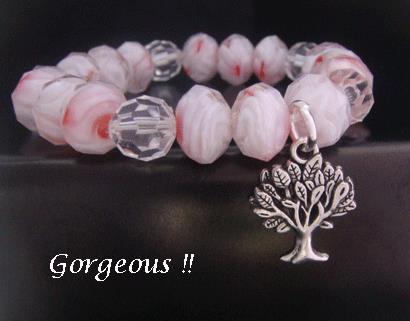
Tree of Life Bracelet with Pink Crystals, Tibetan Silver Tree
Sale: $13.97
Save: 30% off
Tree of Life Meaning - Jewish - Kabbalah
Jewish Tree of Life Meaning (Kabbalah)
| Part of a series on |
| Kabbalah |
|---|
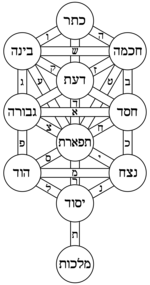 |
The Tree of Life, or Etz haChayim (?? ?????) in Hebrew, is a classic descriptive term for the central mystical symbol used in the Kabbalah of esoteric Judaism, also known as the 10 Sephirot. The symbolic configuration of 10 spiritual principles (11 can be shown, of which - Keter and Da'at are interchangable), arranged in 3 columns/pillars, describes the manner in which God creates existence ex nihilo, the nature of revealed divinity, the human soul, and the spiritual path of ascent by man. In this way, Kabbalists developed the symbol into a full model of reality, using the tree to depict a map of Creation.
Jewish Kabbalah usually refers to the symbol as the 10 Sephirot, while non-Jewish Christian Cabala and Hermetic Qabalah generally terms it universally as the Cabalistic/Qabalistic Tree of Life. This metaphor derives from Judaic Kabbalah, though is understood less universally. In the Jewish Kabbalist view, both of the two trees in the Biblical Garden of Eden, the Tree of knowledge of good and evil and the Tree of Life were alternative perspectives of the Sephirot: the full array of 10 as seen respectively from the last Sephirah Malkuth, and the middle Sephirah Tiferet.[1]
From the Renaissance onwards, the Jewish mystical concept was adopted by some esoterically inclined Christians as well as some Hermeticists. Among the Christian Cabalists,[which?] the sephirot were also called Dignities, referred to by Latin, instead of Hebrew, names.[citation needed] Christian Cabala also places emphasis on Christ as Sustainer and Preserver of the Universe, and the Malkuth of Jewish Kabbalah is absent, as it is considered of a different order-of-being.[citation needed] Hermetic Qabalah's use of the Tree continues as a contemporary Western esotericism tradition, with alternative Esoteric Christian and Occultist emphases.
Jewish Kabbalah interpretations
Christian Cabala and Hermetic Qabalah interpretations
Kabbalists believe the Tree of Life to be a diagrammatic representation of the process by which the Universe came into being. On the Tree of Life, the beginning of the Universe is placed at a space above the first sephira, named Keter ("crown" in English). It is not always pictured in reproductions of the Tree of Life, but is referred to universally as Ain Soph Aur (Ain - Without, Soph - End, Aur - Light).[citation needed] To kabbalists, it symbolizes that point beyond which our comprehension of the origins of Being cannot go; it is considered to be an infinite nothingness out of which the first 'thing' (thought of in science and the Kabbalah to be energy) exploded to create a Universe of multiple things.[2][3]
Interpretations of the Kabbalah in jewellery form such as a Tree of Life necklace or pendant will often depict this geometric representation albeit the Tree of Life in Jewish culture and art can be represented in many different styles and forms.
Kabbalists also do not envision time and space as pre-existing, and place them at the next three stages on the Tree of Life. First is Keter, which is thought of as the product of the contraction of Ain Soph Aur into a singularity of infinite energy or limitless light. In the Kabbalah, it is the primordial energy out of which all things are created. The next stage is Chokmah, or Wisdom, which is considered to be a stage at which the infinitely hot and contracted singularity expanded forth into space and time. It is often thought of as pure dynamic energy of an infinite intensity forever propelled forth at a speed faster than light. Next comes Binah, or Understanding, which is thought of as the primordial feminine energy, the Supernal Mother of the Universe which receives the energy of Chokmah, cooling and nourishing it into the multitudinous forms present throughout the whole cosmos.[4] It is also seen as the beginning of Time itself.
Numbers are very important to kabbalists, and the Hebrew letters of the alphabet also have a numerical value for the kabbalists. Each stage of the emanation of the Universe on the Tree of Life is numbered meaningfully from one (Keter) to ten (Malkuth). Each number is thought to express the nature of its sephira.[5]
The first three sephirot, called the Supernal Sephirot, are considered to be the primordial energies of the Universe. The next stages of evolution on the Tree of Life are considered to exist beyond a space on the tree, called the Abyss, between the Supernals and the other Sephiroth, because their levels of being are so distinct from each other that they appear to exist in two totally different realities. The Supernal Sephiroth exist on a plane of divine energy. This is why another correspondence for Binah is the idea of suffering, because the Supernal Maternal energy gives birth to a world that is inherently excluded from that Divine Union. After Binah, the Universe gets down to the business of building the materials it will need to fulfill its evolution, and creating new combinations of those materials until it is so dense that, by the stage of Malkuth, the initial pure limitless energy has 'solidified' into the physical Universe. Since its energies are the basis of all Creation, the Tree of Life can potentially be applied to any area of life, especially the inner world of Man, from the subconscious all the way to what Kabbalists call the higher self.
But the Tree of Life does not only speak of the origins of the physical Universe out of the unimaginable, but also of Man's place in the Universe. Since Man is invested with Mind, consciousness in the Kabbalah is thought of as the fruit of the physical world, through whom the original infinite energy can experience and express itself as a finite entity. After the energy of Creation has condensed into matter, it is thought to reverse its course back up the Tree until it is once again united with its true nature. Thus, the kabbalist seeks to know himself and the Universe as an expression of God, and to make the journey of Return by stages charted by the Sephiroth, until he has come to the realisation he sought.
Similarities to other traditions
The Tree of Life bears many similarities to the Christian Gnostic conception of the Pleroma, emanations from the ineffable and self-originating Divine Parent that offer the best possible means of describing God. Each emanation in the pleroma is born from a more complex emanation before it. Most notably between these two allegories is the final sephira on the Tree, Malkuth, and the last emanation in the Pleroma, Sophia, whose fall resulted in the physical world.
In the Bhagavad Gita[citation needed] there is a mention of Asvattha, tree of Life and Being, whose destruction alone leads to immortality, is said in the Bhagavad Gita to grow with its roots above and its branches below. The roots represent the Supreme Being, or First Cause, the LOGOS; but one has to go beyond those roots to unite oneself with Krishna. The Vedas are its leaves. He only who goes beyond the roots shall never return, i.e., shall reincarnate no more during this "age" of Brahma.
Image gallery
-
Tree of Life window 1 in the Jewish Historical Museum Amsterdam
-
Tree of Life window 2 in the Jewish Historical Museum Amsterdam
-
Tree of Life window 3 in the Jewish Historical Museum Amsterdam
See also
- Sephirot
- Tree of death (Kabbalah)
- Tree of life (biblical)
- Tree of the knowledge of good and evil
- Tree of Life
References
- ^ The Tree of Life - Kuntres Etz HaChayim, A classic chassidic treatise on the mystic core of spiritual vitality by Rabbi Shalom DovBer Schneersohn of Lubavitch, translated by Rabbi Eliyahu Touger, Kehot publications. Extensive comparison of the 10 Sephirot views of the two trees
- ^ Fortune, Dion. The Mystical Qabalah. York Beach, ME: Samuel Weiser, Inc. (2000) p. 30-33 ISBN 1-57863-150-5
- ^ Malachi, Tau. Gnosis of the Cosmic Christ. A Gnostic Christian Kabbalah. St. Paul, MN: Llewellyn Publications. (2005) pp. 19-20. ISBN 0-7387-0591-8
- ^ Regardie, Israel. The Tree of Life: An Illustrated Study in Magic. St. Paul, MN: Llewellyn Publications. (2000) pp. 49-54. ISBN 1-56718-132-5
- ^ Encausse, Gerard (Papus). The Qabalah: Secret Tradition of the West. York Beach, ME: Samuel Weiser, Inc. (2000) pp. 83-4. ISBN 0-87728-936-0





